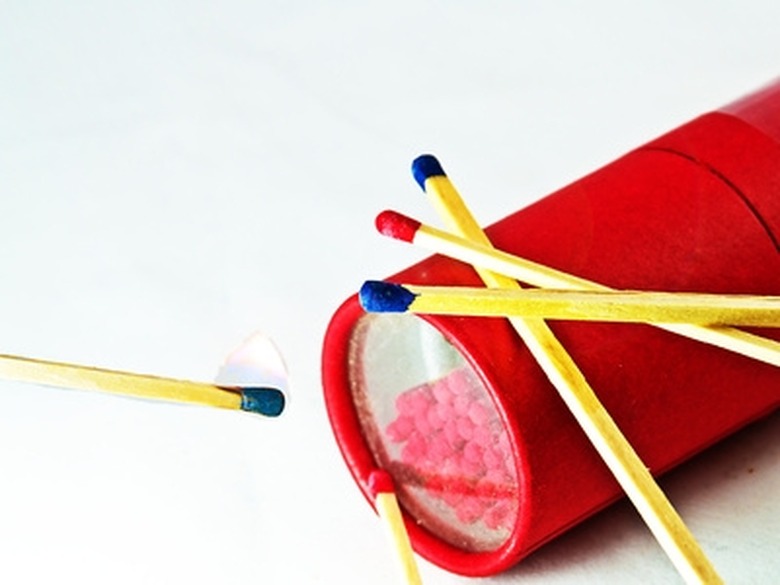How To Make Potassium Hydroxide
Potassium hydroxide is a strong base made from the alkali metal potassium, atomic number 19 on the periodic table. It is a useful starting material in the manufacture of most potassium salts. There are a number of ways it can be made, whether practical from a commercial point of view or not.
Step 1
Make potassium hydroxide from the metal. Although it is not a commercially viable way of preparing potassium hydroxide, potassium metal can be combined with water (this is dangerous) to evolve hydrogen and yield potassium hydroxide.
2 K + 2 H?O ? 2 KOH + H??
When potassium metal comes into contact with water, so much heat is generated that the metal melts and the hydrogen bursts into a purple flame. Even a piece of potassium the size of a pea reacts in this way.
Step 2
Make potassium hydroxide from wood ashes. The pioneers leached the ashes from their wood fires and used the potassium carbonate they contained to make soap. Potassium carbonate, if heated strongly, gives off carbon dioxide gas, producing potassium oxide. Reacting the oxide with water produces potassium hydroxide.
K?CO? ? K?O + CO??
K?O + H?O ? 2 KOH
Follow this procedure using the kiln to heat the potassium carbonate.
Step 3
Electrolyze potassium chloride solution in the electrolysis apparatus.
Electrolysis of an aqueous solution of potassium chloride produces chlorine gas at one electrode and potassium hydroxide at the other. The gas is either collected or allowed to escape to the atmosphere. The reaction is:
2 KCl + 2 H?O ? 2 KOH + Cl?? + H??
The hydrogen gas forms at the cathode, as does the potassium hydroxide, while the chlorine gas forms at the anode.
Step 4
Prepare potassium hydroxide from miscellaneous compounds.
Potassium hydroxide can be made (though it is impractical) from hydride, acetylide, azide, and a host of other compounds. For instance, the azide, K?N reacts with water to form potassium hydroxide, ammonia gas, and a lot of heat:
2 K?N + 6 H2O ? 6 KOH + 2 NH3 + ?.
The acetylide, if reacted with water, makes acetylene gas and potassium hydroxide. Correspondingly, the hydride makes hydrogen gas and potassium hydroxide.
Things Needed
- Chemical reagents
- Kiln
- Electrolysis apparatus
- Safety equipment
Warning
Potassium hydroxide is very caustic. It causes severe chemical burns and blindness. Consult the appropriate material safety data sheet. Trained persons only should use potassium hydroxide, or any of the chemical substances listed in this article. All appropriate safety equipment, and particularly eye protection, should be employed.
Cite This Article
MLA
Summers, Vincent. "How To Make Potassium Hydroxide" sciencing.com, https://www.sciencing.com/make-potassium-hydroxide-5700913/. 24 April 2017.
APA
Summers, Vincent. (2017, April 24). How To Make Potassium Hydroxide. sciencing.com. Retrieved from https://www.sciencing.com/make-potassium-hydroxide-5700913/
Chicago
Summers, Vincent. How To Make Potassium Hydroxide last modified March 24, 2022. https://www.sciencing.com/make-potassium-hydroxide-5700913/
